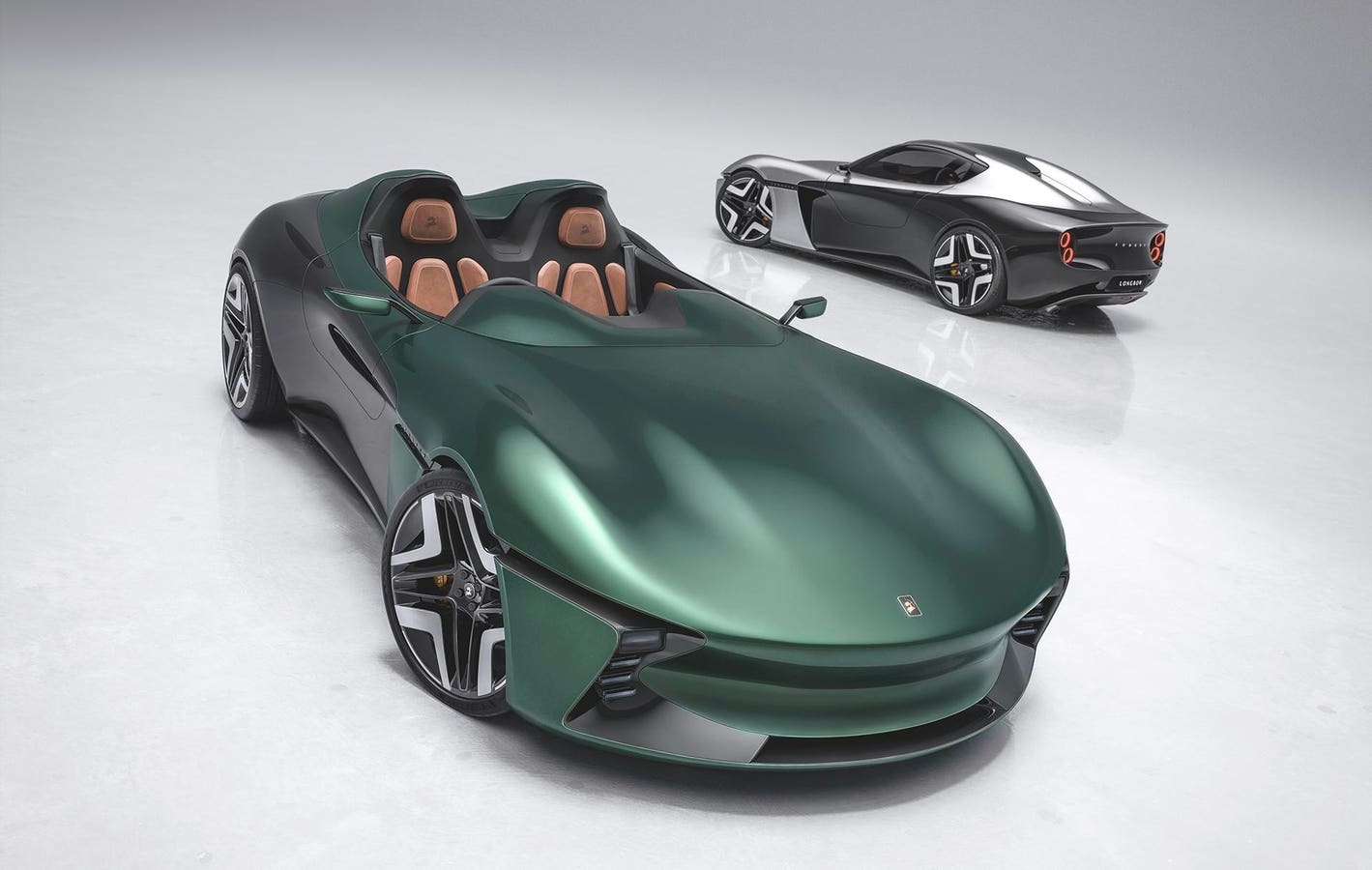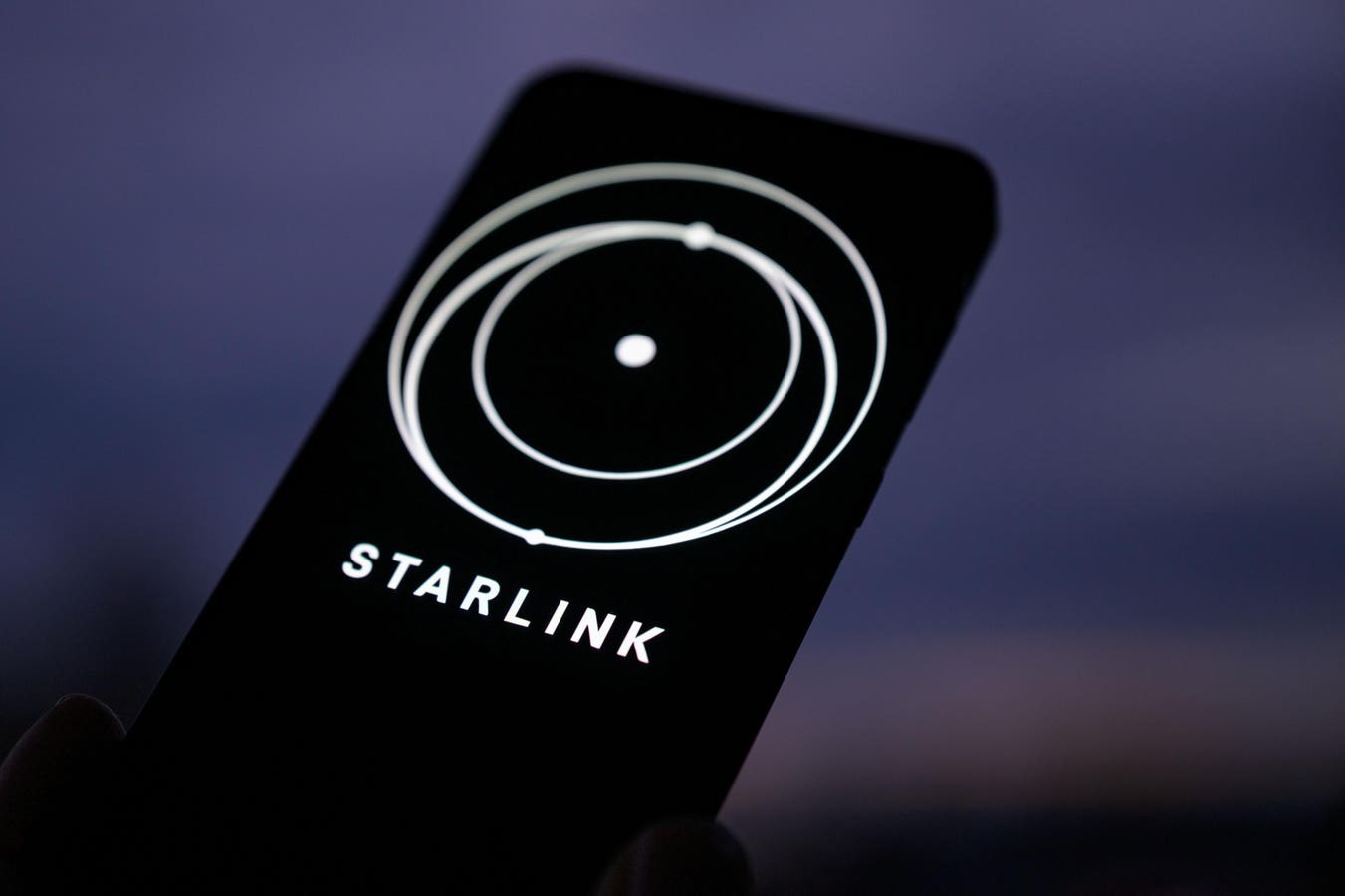Longbow’s EV sports cars will foreground design beauty over brute performance.
Longbow
Electric cars have a weight problem. The heft of batteries means EVs are generally a few hundred kilograms heavier than their fossil fuel equivalents. You can hide this in an SUV that’s already quite chubby, but so far has meant that a light, nimble electric sports car has been out of reach. British startup Longbow intends to change that. I talked to the team behind the car.
The Origins Of Longbow
The lack of electric sports cars is particularly curious when you consider that one of the pioneering vehicles of the current EV trend was in this genre, and Longbow’s leadership was there creating it. “I started my role in EVs in 2010 with the Tesla Roadster out in California, which was an incredible stage of the business,” says Daniel Davey, CEO, Longbow. However, as the market grew, Davey didn’t see anything else like the Roadster arriving.
However, the EV world has moved a long way in the last 15 years. At the time of the Roadster, Tesla had to invent many components itself. “Today, a lot of great components are there almost off the shelf,” says Davey. “The sports car is one of the most exciting and most obvious applications of electric vehicle technology, with torque, low center of gravity, and a small center of inertia.” Longbow initially considered electrifying historic sports cars. “We quickly realized that it’s almost a contradiction.”
The Longbow leadership team has a wealth of EV startup experience.
Longbow
Davey decided to start with a clean sheet instead. This led to Longbow’s formation in August 2023. “We’ve got a clear mission to change how the Earth feels about sports cars,” explains Mark Tapscott, COO, Longbow, who also has a Tesla connection. He previously launched Tesla in the UK and UAE, with subsequent stints at Hyundai, Lucid and BYD. “It’s not just about building a sexy fast car. It’s about lightness and purity and engineering honesty, rejecting all the weight creep, tech bloat and short-term thinking of modern cars.”
While Longbow is a startup, the experience of the three main figures behind it goes deep into the pioneering of electrification, with 40-plus years over six different electric brands. The third member of this trio is Executive Chair, Jenny Keisu, who was previous involved in Swedish electric powerboat startup XShore. However, even with the heft of its leadership, Longbow is a startup in the UK – a country that has had its fair share of bold but ultimately failed small sports car companies.
Can Longbow Break The Curse Of Small British Automakers?
So why might Longbow succeed while others have floundered? “In the hypercar space, it’s almost stats overload,” says Davey. “One of our principles is to focus on beauty and authenticity not stats because sports cars are more than just 0-60.” Longbow isn’t targeting the Rimac Nevera or Pininfarina Battista market. “When we say a sportscar we mean a two-seater that sits between £65,000 ($88,000) and £150,000 ($203,000).” The initial product, the Roadster, will cost £84,995 ($115,000) and the subsequent coupe £64,995 ($88,000). “The lower the price point, the larger your opportunity. There is no product in that space other than the MG Cyberster. We’re not looking at a zero to 60 in 2.1 seconds or having the longest possible range. It’s around building a driver focused, beautiful car and having a different ownership experience.”
Longbow is aiming at customers who want a less technology-assisted driving electric driving experience. “It is the first application of an electric powertrain in a lightweight sports car,” says Davey. “People have almost forgotten what lightweight sports cars are, but when you then apply an electric powertrain to it, people will be absolutely blown away.”
The Roadster will be the first Longbow car to hit the market.
Longbow
“This car can’t sail across the Yangze River like a Yang Wang,” adds Tapscott. “We’ve had to create our own category. We’re not a lightweight electric vehicle. We are a featherweight electric vehicle.” The Roadster will allegedly weigh in at 895kg, while the coupe will be 995kg – incredible when the MG Cyberster is around 2,000kg. “That changes absolutely everything. This will never be the fastest car. It will never have the most power. But it will be the most fun thing to drive because of that featherweight aspect.” The motor will reportedly only offer 322hp, but that’s a lot for a car under 1,000kg, particularly with the immediacy of electric torque.
The reception to the design reveal has been extremely positive so far. “To date we spent zero in marketing and we already have enough reservations to take us through the first year of manufacturing,” says Keisu. “Customers are split roughly equal between US and Europe. The reaction from our customers is that this is finally what they have been waiting for. Our customers don’t want us to change anything. So now we’re not changing anything.”
We have seen some similar sports car hits from the combustion era, so the originality here is applying the concept to EVs. “Everything now can go very fast in a straight line,” says Tapscott. “But does that really bring a great deal of passion after you’ve done it 20 times? The Toyota GT86 and Mazda MX5 are cars that really changed how people felt about sports cars. You don’t have to take a Longbow to the track to fully enjoy it. You can commute in the vehicle, but then really have fun at the weekend. That’s what a real sports car should be.”
Longbow: It Will Come With a Stick
Although the exterior designs have been widely reported, Longbow hasn’t been specific about the technology it will be used in its cars beyond some baseline figures. It won’t be building its own completely bespoke drivetrain, however. “There’s never been a better time to build an electric sports car,” says Davey. There will be some technological innovations, however. “We will be the first to use module to chassis, where you’re not putting a battery box in because that’s extra materials. Your chassis is your pack, and your modules go straight into that. Fewer adhesives, less weight, less complexity in the design. That’s how you should build a sports car.”
“Our innovations are centered around simplicity and lightness,” adds Davey. “The car doesn’t need to swim or fly. It just needs to be a great on-road performance sports car. Often that could mean less. Rear wheel drive that’s a bit lively, which you can really control at 3.5 seconds to 60mph is probably better than four-wheel drive that’s super sticky and gets to 60 in 2.2.” However, the Longbow design will have the option of dual motors in the future.
A coupe will be Longbow’s second production vehicle.
Longbow
Davey argues that he learnt some of the strategy for Longbow from his time with the Roadster. “Tesla focuses you on simplicity,” he argues. “You know what shouldn’t be in the car is as important as what should be. Rejecting distractions in favor of the vision is so critical. Tesla’s world class at rejecting how things were done previously. Our time from ideation to design freeze is a fraction of what it would be for anyone else. We’re not planning to be a technology or software company that’s building a car. We’re a car company building a car enabled by technology.”
Longbow doesn’t expect to be a volume player, despite its unique strategy. “We see a very tangible opportunity for 10,000 cars a year before the end of this decade,” says Davey. That is within the 250,000 cars a year two-seater sports car segment, which is primarily the US, Europe and Japan.”
Despite the international focus, this is very much a British creation. The car is designed, engineered and manufactured in the UK, with most of its supply chain from Britain too. One of the reasons why Longbow reckons it can succeed from the British Isles is the team it has put together. “One of our rules is that you can never get too much good advice,” says Tapscott. Longbow recently brought three heavyweights to its advisory board: former McLaren CEO Mike Flewitt, ex-Alpine boss Michael van der Sande, and ex-Lotus chief Dan Balmer. “We have well over a century worth of British sports car experience with all of us now on the team.” He hopes this will help Longbow avoid the mistakes other companies have made in the past.
Davey characterizes the Longbow strategy as flexible. He contrasts this to companies that spend a huge amount of money developing their own proprietary technology. “If they want a motor, they’ve got to build a billion-dollar factory to manufacture it,” he says. “If we want more motors, we can look at multiple different options based on our requirements. We don’t need to develop that tech. It would increase our cost. The UK has such an incredible supply chain, and billions were sunk into that. That’s not just EV, that’s other parts – brakes, panels, suspension, everything. It’s such a great opportunity to leverage what’s already there.”
Longbow: Longshot Or Bullseye?
“Theater is what we’re aiming for,” continues Tapscott. “The driving experience should be any major car company’s real IP, especially in electrification. There will be sticks that you wouldn’t expect to see inside an electric vehicle appearing in our car, to give you a bit of a flavor.” Tapscott wouldn’t elaborate about what exactly this meant, saying I’d have to let my imagination “run wild” about it.
What Longbow would say is that their batteries would be NMC chemistry 2170 cylindrical cells, the current most widely used type. The company isn’t targeting a huge range and record-breaking performance, both of which require bigger, more specialized battery packs that would increase weight. “Our focus is 3.5 seconds zero to 60mph, 125mph top speed and a range of 270 miles,” says Davey. “As soon as you do any more than that you need bigger motors, more inverters, more cooling. Then you’re playing the game that everyone else is currently losing money on and that doesn’t make any sense.” No decision has been made yet whether to use 400V or 800V architecture, although Davey claims 400V is more likely for cost and supply chain availability reasons.
“We’re authentic,” says Tapscott. “We’re doing what people said they wanted.” Nürburgring times are not the focus. “That would destroy what the whole ethos is. For us, a sports car is something that you drive it, you’re fully engaged, you’re forgetting about the rest of the world, and then you park up, and as you walk away, you want to turn around and look at it. That’s why we’ve we worked hard on how the car looks.”
We will find out soon if the Longbow concept fulfils its promise. “Start of production will be end of 2026,” says Davey. “In between there will be several cars on the road. The first will be very soon. These are not prototypes.” The cars in the pictures will basically be what ships. “We’re going to do something very exciting that we’ll announce over the next couple of months. We’ll show a lot more, early next year. We are hellbent on starting production and moving towards getting cars on the road and in customers’ hands.”









